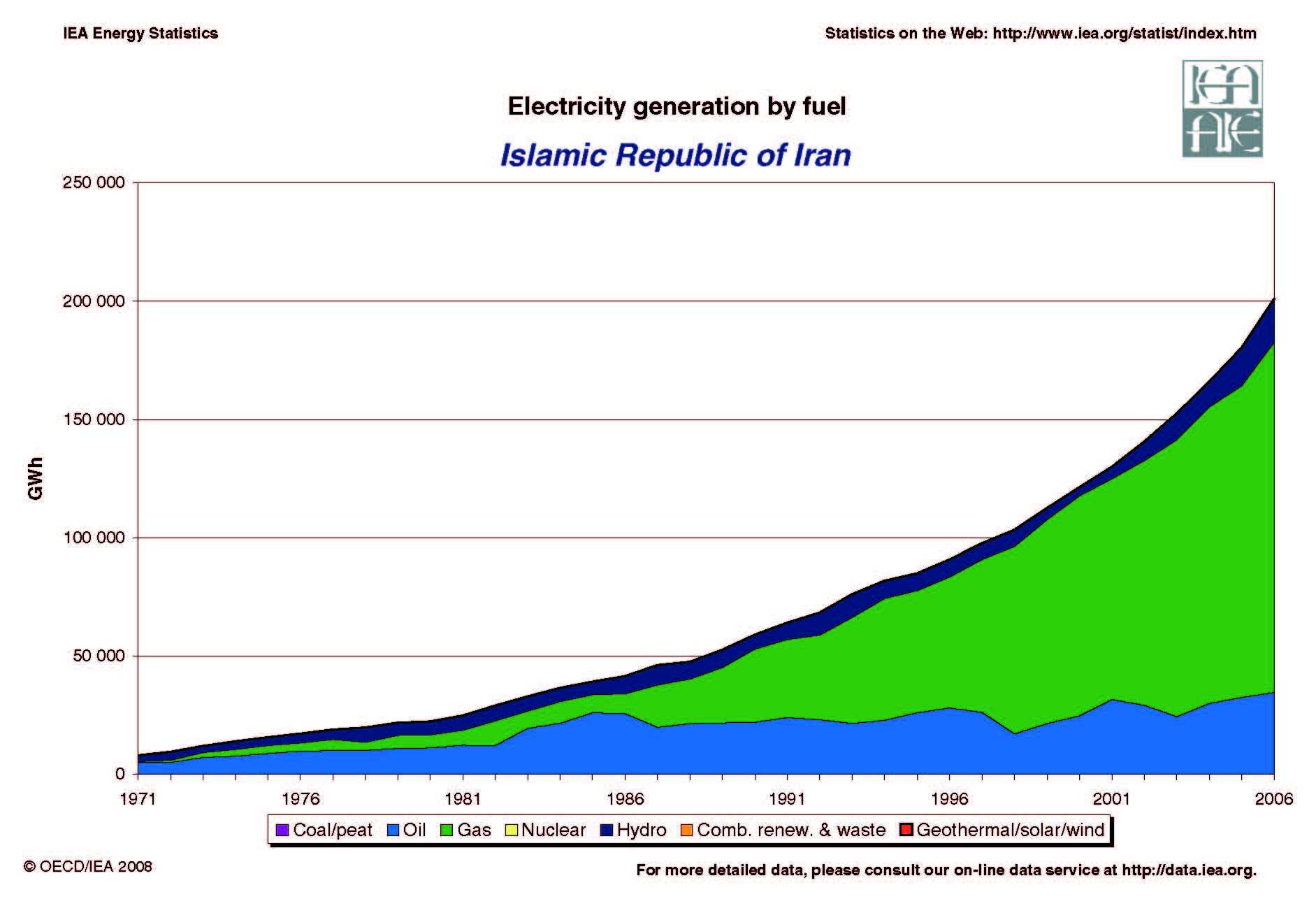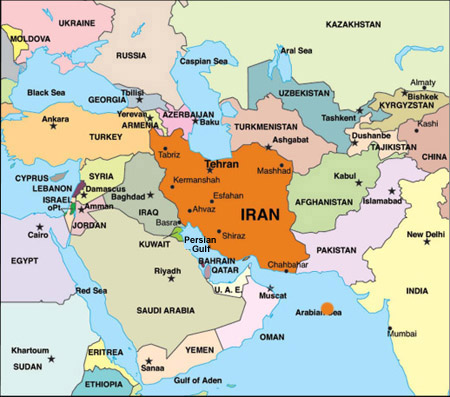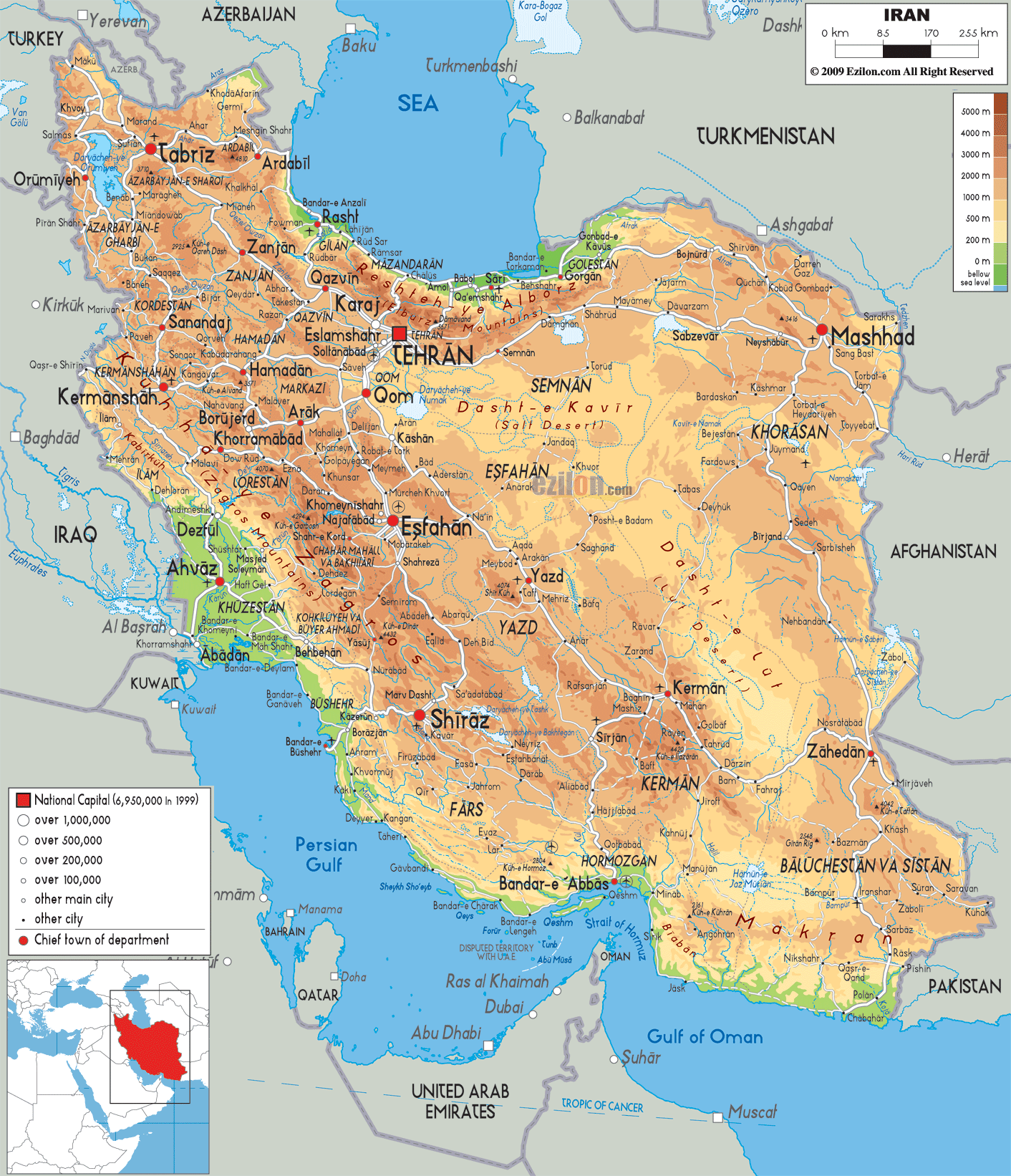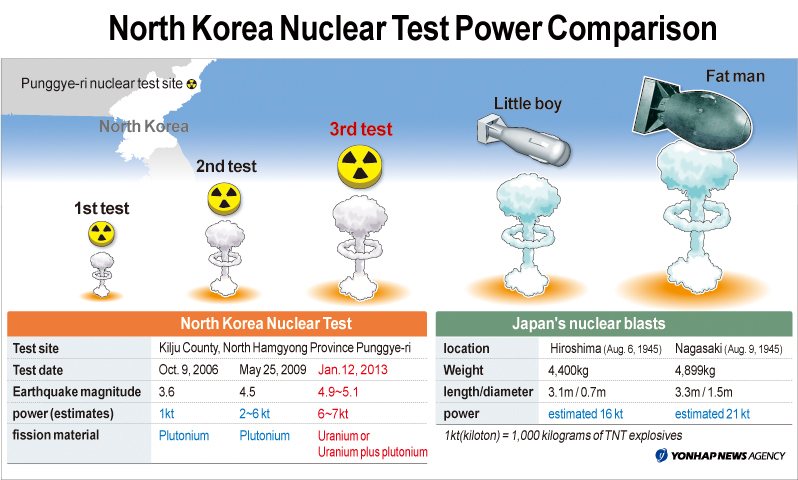Energy Independence for Iran
Introduction
Iran has been in dispute with many countries about the use of the country's energy resources. Specifically about their need for subsidization and technological advances in energy production. The Nuclear Program in Iran began in the 1950's with the help of the United States as part of a peace program but was shut down in 1979. However with the Iranian revolution the research continued. They have been criticized by the International Atomic Agency for undertaking research that was focused on nuclear weapons. The tensions between Iran and the rest of the world have increased dramatically.
Background
Iran is an energy superpower. They have the fourth largest oil reserves and the world's largest natural gas reserve. The energy consumption in Iran is much higher than the international standards. Iran recycles 28% of used oil and gases whereas the amount for certain countries is 60%. Their per capita energy consumption is 15 times that of Japan and 10 times that of the European Union.
Iran since the 1950's has been working on a nuclear program to help their technological advances. The rest of the world, however, has looked down on their program. Iran was accused of having plans to build nuclear weapons and the International Atomic Energy Agency launched an investigation into their nuclear program. While a tentative deal has been reached, there are still many more things to be discussed.
Iran since the 1950's has been working on a nuclear program to help their technological advances. The rest of the world, however, has looked down on their program. Iran was accused of having plans to build nuclear weapons and the International Atomic Energy Agency launched an investigation into their nuclear program. While a tentative deal has been reached, there are still many more things to be discussed.
Location
Iran is one of the richest countries in the Middle East. The size of Iran is just slightly bigger than that of Alaska. The country is dominated by rugged mountain ridges that separate basins from one another. The northern side of Iran is covered by dense rain forests called Shomal or The Jungles of Iran. The east is covered with desert basins as well as some salt lakes.
Iran is full of many different people that all were unified through a shared Persian language and culture. Iran hosts more than one million refugees, mainly from Afghanistan and Iraq. The majority of the population speaks the official language, Persian. According to the CIA factbook around 79% of the population is Indo-European-ethno-Linguistic group and 90 to 95% of the countries population are Muslims.
Development
Change over time -
- 1950s - Iranian nuclear program begins with help from the US
- 1968 - Iran signs non-proliferation treaty
- 1979 - Iranian Revolution, Iran becomes anti-US and US retracts support for nuclear program
- 1979 - Khomeini comes to power, nuclear program disbanded
- 1984 - Nuclear program secretly restarts
- 1989 - New supreme leader
- 1995 - Treaty signed with Russia to complete two reactors in Iran
- 1996 - Sanctions begin
- 2002 - Secret nuclear plants discovered in Iran
- 2003 - Portions of the nuclear program are suspended
- 2004 - Iran violates agreements, and agrees to a new one
- 2005 - New president elected, Mahmoud Ahmadinejad, a very conservative politician
- 2006 - Uranium enrichment restarts, heavy water plant opens, UN sanctions begin
- 2008 - US cyberattacks, nuclear talks go nowhere,
- 2009 - Officials disclose secret intel about a nuclear plant in Iran. Iran denies existence
- 2010 - UN declares evidence that Iran is building a bomb, Stuxnet leaks, more sanctions, key scientists killed by suicide bombings
- 2011 - Even more sanctions, Natanz (the plant that was cyberattacked) returns to regular operation
- 2012 - Suicide bomber kills another scientist, Natanz gains new centrifuges, talks fail, Iranian oil embargo, Israel declares 'red line', Iranian currency loses value
- 2013 - Sanctions increase again, more uranium found, Iranians hoard goods, sanctions for those who help Iran, even more sanctions toward Iran, Iran elects new president who is less conservative, Iran slows enrichment, direct US-Iran talks, talks progress well
- 2014 - Accord agreed upon, information turned over, deal outlined, talks extended, reactor redesigned to produce less plutonium, deadline grows closer, talks extended again
- 2015 - Agreement reached, tension over shipping
Over time, Iran has swung from pro-US, to anti-US, to very anti-US, and then to the more moderate government that Iran has today. Over time, this problem has picked up steam and moved faster and faster. More things started happening each year. Since about 2004, this problem really became a mainstream one, and not a sideshow to the other issues going on at the time. Sanctions started out relatively slowly, but grew faster and faster with each passing year. The real trend in this change is that the speed has increased dramatically.
Impact
The Iranian energy and nuclear complex could potentially be a serious concern. Iran makes more energy then most of the middle east. With additional energy, the people of Iran could have a better quality of life. However, many countries do not want Iran to have the ability to make a nuclear weapon. Iran and its neighbors need to have good relations, especially in a world where nuclear weapons exist. Diplomacy is the best way to prevent nuclear war. The population of Iran has suffered under sanctions, and the lifting of the sanctions with the incoming deal could alleviate the stress placed on the Iranians. Iran does not need yet another energy source. They already posses huge reserves of oil and natural gas (4th and 2nd most in the world, respectively). They could easily make enough energy for their entire population. However, if Iran had more energy, they could potentially sell it to other Middle Eastern countries for a profit. This definitely impacts the United State's relations with Iran, which is potentially the most important part of this. If America can change an enemy into an ally in the volatile Middle East, the Western world could benefit greatly.
TOP FIVE IMPACTS
TOP FIVE IMPACTS
- US - Iran relationship
- Impacts of Iran having more energy
- Iran's citizens
- Nuclear weapons
- Iran's relations with surrounding countries
Future
A nuclear deal has been made, but the details are still being hammered out. Meanwhile, other tensions are rising. Boats passing near Iran have been fired at, and not every country is happy about the deal. The deal could still fall apart, or it could lose support. Iran could elect a more conservative candidate who chooses to ignore the plan being created right now. While this is a victory for the United States, there is no reason for the US to rest on its laurels.
LINKS WITH ADDITIONAL INFORMATION
http://www.wsj.com/articles/new-tensions-build-between-u-s-and-iran-in-waters-off-yemen-1432070644
http://www.nytimes.com/2015/05/21/world/middleeast/iran-nuclear-talks-inspections.html?_r=0
LINKS WITH ADDITIONAL INFORMATION
http://www.wsj.com/articles/new-tensions-build-between-u-s-and-iran-in-waters-off-yemen-1432070644
http://www.nytimes.com/2015/05/21/world/middleeast/iran-nuclear-talks-inspections.html?_r=0
Big Picture
Of course there isn't a list of countries that are in the same situation as Iran but there are some countries that have similar issues. Take Japan. For example, they rely heavily on imports of fossil fuels to get the energy they need. Japan used to depend on their nuclear reactors but since the incident in 2011 they have shut them down for safety reasons. Areas with nuclear reactors say they do not mind starting up the reactors once again.
North Korea is a very self sufficient country based on energy. What they share with Iran is a nuclear program. North Korea began their program in the 1950's, originally for peaceful purposes to help their own country. It eventually turned into a nuclear weapons program that led to the 2006 and 2009 nuclear tests. In 2009 it was estimated that they had up to ten functional warheads and in 2013 they pledged to have more nuclear tests. Currently they have no operational power-generating nuclear reactor but the efforts to develop a nuclear sector continue. As you can see that other countries that experience similar issues cannot do much about it other than to just continue their research.
North Korea is a very self sufficient country based on energy. What they share with Iran is a nuclear program. North Korea began their program in the 1950's, originally for peaceful purposes to help their own country. It eventually turned into a nuclear weapons program that led to the 2006 and 2009 nuclear tests. In 2009 it was estimated that they had up to ten functional warheads and in 2013 they pledged to have more nuclear tests. Currently they have no operational power-generating nuclear reactor but the efforts to develop a nuclear sector continue. As you can see that other countries that experience similar issues cannot do much about it other than to just continue their research.
Subscribe to:
Posts (Atom)






